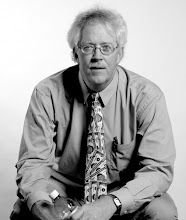The first organizational meetings for the 2015 Navajo Oral History Project class are being held and students are being recruited. The project is a collaboration between Winona State university (Winona, Minnesota) and Diné College (Tsaile, Arizona), the Tribal College of the Navajo Nation.
Three meetings were held in Mid-October at WSU with about 20 Mass Communication students showing interest in participating in the documentary journalism project that goes into the field in May 2015. Last week (Oct. 27-30) Professor Tom Grier and Teaching Assistant Robbie Christiano visited Diné College and spoke to seven classes there to promote the 2015 NOHP. About 20 DC students also indicated interest in joining the class next spring.
Grier and Christiano will hold another promotional meeting at WSU on Monday, Nov. 3, at 1 p.m. in Phelps Hall, Room 116. Following that meeting, the program will begin to finalize its roster of students. The class has a maximum enrollment of 14 WSU students and 14-16 Diné College students.
In mid-May the WSU group will travel to Tsaile, Ariz., on the Navajo Nation to spend nearly three weeks immersed in the culture and working on documentary journalism pieces. The WSU group will stay in residence hall facilities at Diné College and work in collaborative teams with Diné College students. The teams will provide a service project for a Navajo elder (cleaning, gardening, repairing, etc.) to build a relationship of trust, and then interview the elders three times using video, audio and still photography. The groups will produce documentary films that respectfully and authentically tell the elder's story.
DVD copies of the finished films will be given the the families of the elders and each student will get copies. The films will be archived at the Navajo Nation Library, Navajo Nation Museum, Diné College Library, Winona State University Library, Winona Public Library, and the Smithsonian Institution's National Museum of the American Indian. Not many undergraduate students can say their research projects are arched at the Smithsonian.
The Navajo Oral History Project has enjoyed five years of successful collaboration between the two higher education institutions. During those years, 23 documentary film projects about 23 Navajo elders have been completed. The program has included 51 WSU students and 33 Diné College students.
If anyone has questions or comments on the project, email Professor Tom Grier: tgrier@winona.edu.
Sunday, November 2, 2014
Wednesday, February 19, 2014
Tribal College Journal features the Navajo Oral History Project
The Spring 2014 edition of The Tribal College Journal, "the scholarly voice and vision of American Indian higher education," featured an article written by Dr. Tom Grier that focused on the first five years of the Navajo Oral History Project.
The article features several photographs by Winona State University alumni who were student participants in the NOH project over the years. It also includes links to five documentary films created by WSU students in collaboration with students of Diné College, the tribal college of the Navajo Nation.
In the article, Grier, a professor of Mass Communication at Winona State University, traces the multi-year process of gaining approvals from a variety of Navajo Nation officials before the project could begin. Then he describes the five-years of field work he led along with Dr. Miranda Haskie, a professor of Social and Behavioral Science at Diné College. In the third, fourth and fifth years of the project, Haskie and Grier relied heavily on support and help from Robbie Christiano a graduate student and Winona State alumnus.
The Navajo Oral History project completed its fifth year in summer 2013. The leadership team is now working to renew agreements between the two partner higher education institutions and expects the program to begin a second five-year term in summer 2015.
You can read the full text of the article and follow the links to the films through the Tribal College Journal's web site:
http://www.tribalcollegejournal.org/archives/28112.
The article features several photographs by Winona State University alumni who were student participants in the NOH project over the years. It also includes links to five documentary films created by WSU students in collaboration with students of Diné College, the tribal college of the Navajo Nation.
In the article, Grier, a professor of Mass Communication at Winona State University, traces the multi-year process of gaining approvals from a variety of Navajo Nation officials before the project could begin. Then he describes the five-years of field work he led along with Dr. Miranda Haskie, a professor of Social and Behavioral Science at Diné College. In the third, fourth and fifth years of the project, Haskie and Grier relied heavily on support and help from Robbie Christiano a graduate student and Winona State alumnus.
The Navajo Oral History project completed its fifth year in summer 2013. The leadership team is now working to renew agreements between the two partner higher education institutions and expects the program to begin a second five-year term in summer 2015.
You can read the full text of the article and follow the links to the films through the Tribal College Journal's web site:
http://www.tribalcollegejournal.org/archives/28112.
Subscribe to:
Posts (Atom)

